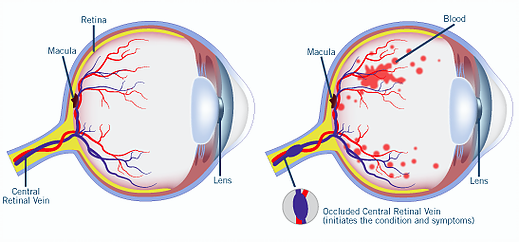May is Healthy Vision Month — Make Vision a Focus!
From the moment you wake up until you go to bed at night, your eyes are working to bring you the world. In fact, they deliver 80% of the information you take in every day — about your loved ones, your job, and all the things you love to see and do! That’s why it’s so important to keep them healthy and safe.
We get our eye color from our parents, but did you know that many eye diseases can run in families, too? Talking to your family members about their eye health can help you find out if you’re at higher risk for eye disease. If you learn that eye diseases run in your family, talk with your eye doctor. Here are some of the most common eye diseases to discuss:
Cataract: A cataract is a clouding of the lens in the eye that affects vision. Most cataracts are related to aging. Cataracts are very common in older people. By age 80, more than half of all Americans either have a cataract or have had cataract surgery.
The risk of cataract increases as you get older. Other risk factors for cataract include:
- Certain diseases (for example, diabetes).
- Personal behavior (smoking, alcohol use).
- The environment (prolonged exposure to ultraviolet sunlight).
Age related macular degeneration: Age-related macular degeneration (AMD) is a disease that blurs the sharp, central vision you need for “straight-ahead” activities such as reading, sewing, and driving. AMD affects the macula, the part of the eye that allows you to see fine detail. AMD causes no pain.
Glaucoma: Glaucoma is a group of diseases that can damage the eye’s optic nerve and result in vision loss and blindness. It is one of the main causes of blindness in the United States. However, with early treatment, you can often protect your eyes against serious vision loss. Therefore it is very important that it be diagnosed.
Diabetic Eye Disease: Diabetic eye disease refers to a group of eye problems that people with diabetes may face as a complication of diabetes. People with diabetes are at risk for diabetic retinopathy, cataract and glaucoma.
Retinal Detachment: The retina is the light-sensitive layer of tissue that lines the inside of the eye and sends visual messages through the optic nerve to the brain. When the retina detaches, it is lifted or pulled from its normal position. If not promptly treated, retinal detachment can cause permanent vision loss.
Corneal Eye Disease:
The cornea is the eye’s outermost layer. It is the clear, domeshaped surface that covers the front of the eye. It plays an important role in focusing your vision. The cornea acts as a barrier against dirt, germs, and other particles that can harm the eye. The cornea shares this protective task with the eyelids and eye sockets, tears, and the sclera (white part of the eye). The cornea also plays a key role in vision by helping focus the light that comes into the eye. The cornea is responsible for 65-75 percent of the eye’s total focusing power. Common conditions that affect the cornea include Injuries, allergies, keratitis, dry eye, Keratoconus and corneal dystrophies.
Why is a comprehensive eye health and vision examination important?
Recent research confirms what eye doctors have known for some time. A comprehensive eye exam by a Doctor of Optometry can – and often does – reveal a surprising number of ailments, such as diabetes and heart conditions.
A study conducted at the University of Waterloo in Canada showed that among patients who came in for a routine checkup, 58% had at least one significant change or health concern not apparent in previous exams. The study defined “significant change” as a change in prescription, diagnosis of a new eye condition, or a change in overall patient health.
“I give a lot of weight to the health-assuring aspect of routine eye care,” one researcher said. “We diagnose early glaucoma, cataract and macular degeneration quite often.”
Healthy Vision Month is a time to raise awareness about eye health and strategies to help prevent vision loss and blindness. There are lots of ways you can get involved, but first things first: get an eye exam — and encourage the people you care about to do the same!
Optimum Vision and Eye Care is here to fill all your eye health and vision needs. Call today for an appointment: 480-588-8858. VSP, BCBS, Cigna and Medicare plans accepted.











